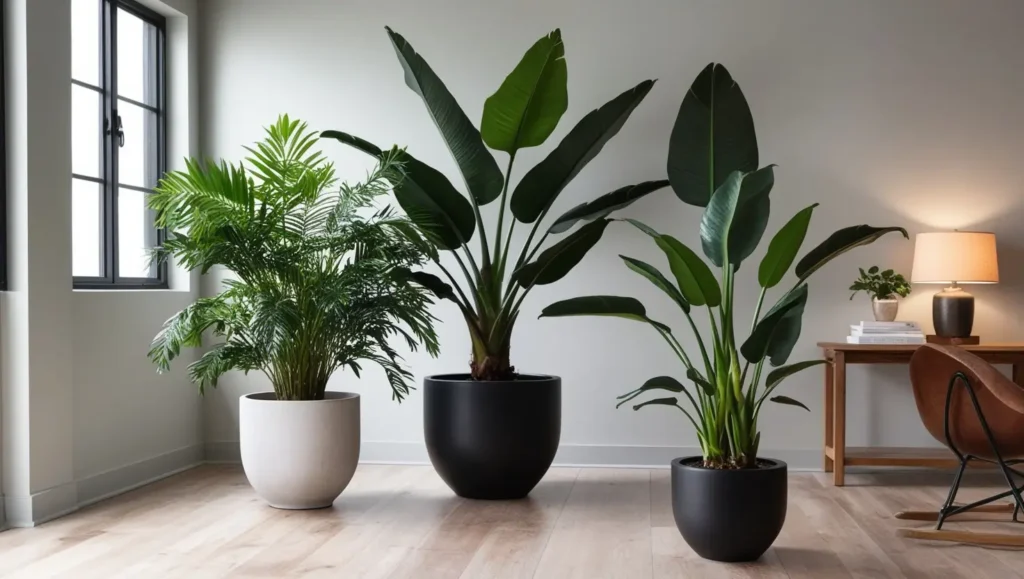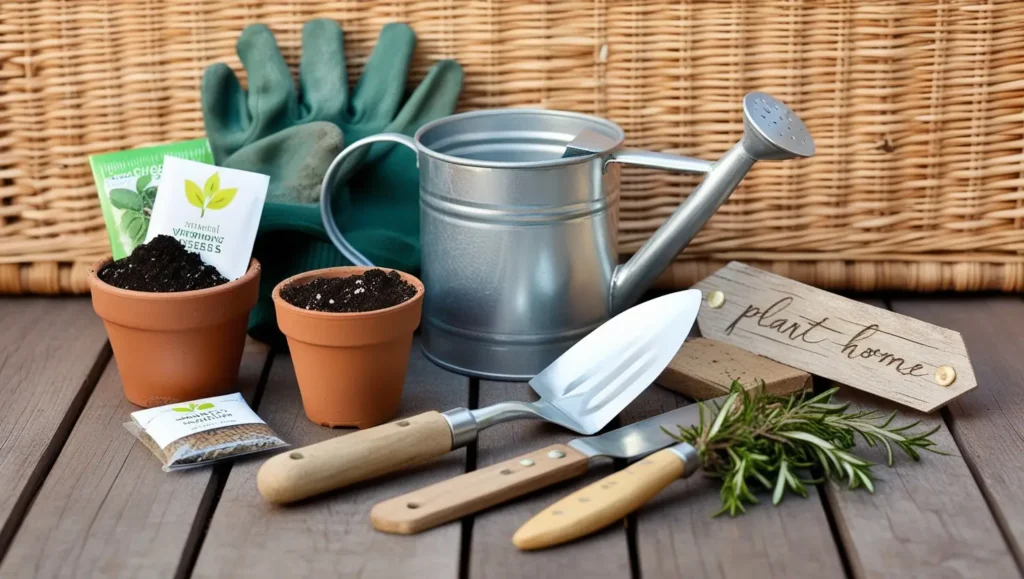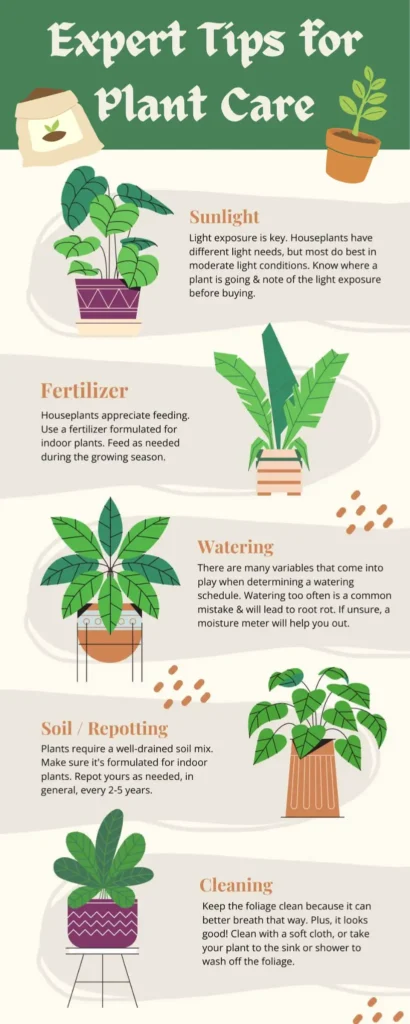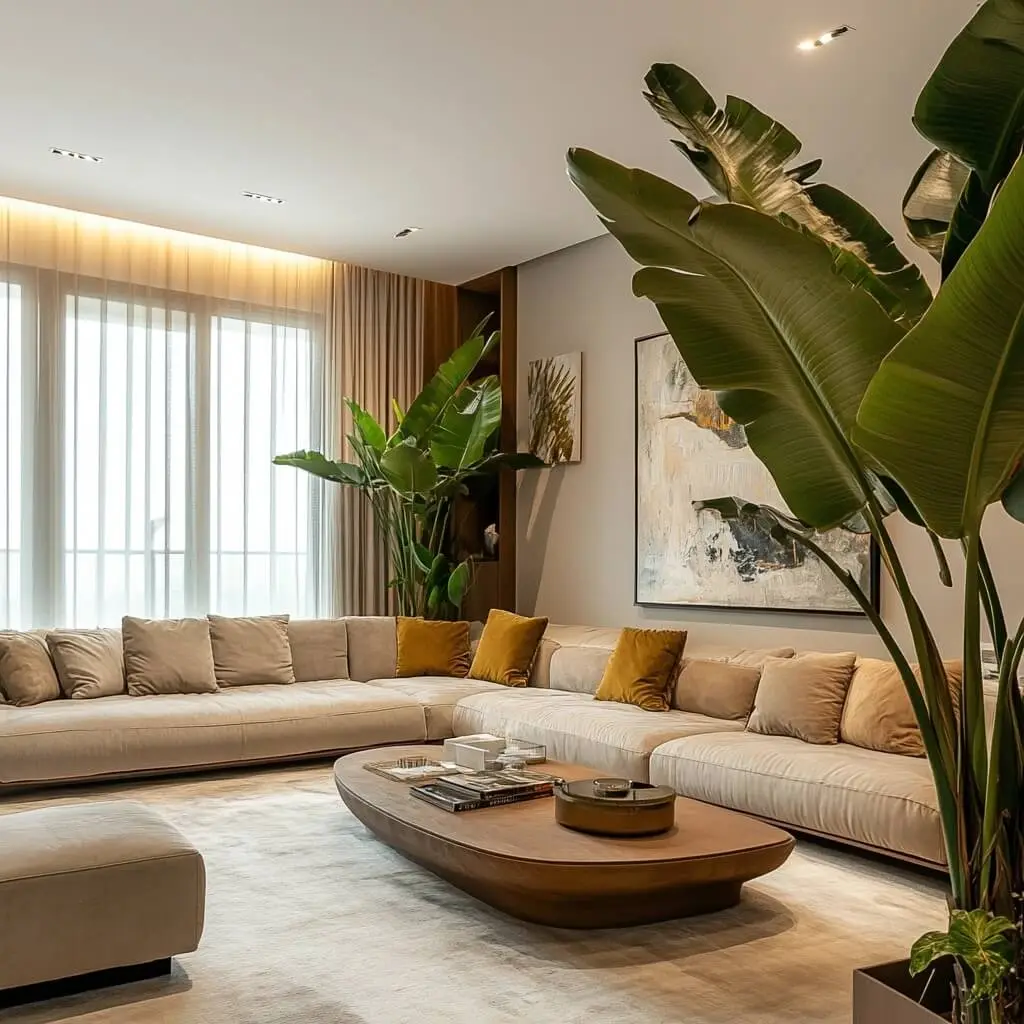Looking to make a bold statement in your home or office with minimal effort? Large plants might be the perfect solution. In this post, we’ll explore the benefits of incorporating large plants into your space, the essential tools you’ll need, and expert tips for keeping them healthy and thriving.
Table of Contents
Benefits of Large Plants
Aesthetic Appeal and Ambiance
Large plants can dramatically enhance the aesthetic of any room. They serve as natural focal points, adding a touch of elegance and sophistication. Whether you’re aiming for a tropical vibe or a minimalist look, large plants can complement any interior design style. Personally, I’ve found that adding a large fiddle leaf fig to my living room not only filled an awkward corner but also became a conversation starter for guests.


Health and Well-being
Beyond aesthetics, large plants offer numerous health benefits. They improve air quality by filtering toxins and releasing oxygen, which can boost your mood and productivity. Studies have shown that being around plants can reduce stress and promote a sense of calm. I remember when I first introduced a large peace lily into my workspace; the difference in air quality was noticeable, and it made my work environment much more pleasant.
Environmental Impact
Large plants contribute positively to the environment by absorbing carbon dioxide and releasing oxygen. They also help regulate humidity levels, making your indoor environment more comfortable. This is particularly beneficial in dry climates or during winter months when indoor air can become quite dry.
Planting Equipment Needed
To successfully care for large plants, you’ll need the right tools:
- Pots and Containers: Choose sturdy pots that can support the weight and size of your plant. Consider materials like ceramic or terracotta for their durability and aesthetic appeal.
- Potting Soil: Use high-quality soil that provides good drainage and nutrients. A mix of peat, perlite, and compost works well for most large plants.
- Watering Can / Spray Bottle: Ensure your plant receives adequate moisture without overwatering. A long-spout watering can is ideal for reaching the base of large plants.
- Pruning Shears or Scissors: Keep your plant healthy by trimming dead leaves and branches. Regular pruning encourages new growth and maintains the plant’s shape.
- Fertilizer: Feed your plant with the right nutrients to promote growth. Slow-release fertilizers are convenient and effective for large plants.


Step-by-Step Instructions for Planting
- Choose the Right Plant: Consider the light and space available in your home. Large plants like the rubber plant or monstera deliciosa thrive in bright, indirect light.
- Select a Suitable Pot: Ensure it has drainage holes to prevent waterlogging. The pot should be slightly larger than the plant’s root ball to allow for growth.
- Prepare the Soil: Mix potting soil with perlite for better drainage. This prevents root rot and ensures the plant receives adequate oxygen.
- Planting: Place the plant in the pot, fill with soil, and water thoroughly. Make sure the plant is centered and upright.
- Positioning: Place your plant in a location with appropriate light conditions. Avoid direct sunlight, which can scorch the leaves.
Expert Tips for Plant Care
- Watering Schedule: Water your plant when the top inch of soil feels dry. Overwatering is a common mistake, so it’s better to err on the side of underwatering.
- Light Requirements: Most large plants thrive in bright, indirect light. If natural light is limited, consider using grow lights to supplement.
- Pest Prevention: Regularly check for pests and treat with natural insecticides if necessary. Neem oil is an effective and eco-friendly option.
- Common Mistakes: Avoid overwatering and placing your plant in direct sunlight for extended periods. Also, be cautious of drafts from windows or air conditioning units.


Large Plant Recommendations
Low-Light Tolerant Plants
- Monstera Deliciosa: Known for its unique leaf patterns and adaptability. It’s a favorite among plant enthusiasts for its dramatic foliage.
- ZZ Plant: Requires minimal light and care, perfect for beginners. Its waxy leaves are not only attractive but also resilient to neglect.
Easy-Care Plants
- Rubber Plant: Hardy and resilient, ideal for busy individuals. Its glossy leaves add a touch of elegance to any room.
- Fiddle Leaf Fig: Popular for its striking appearance and easy maintenance. With proper care, it can grow into a stunning centerpiece.
Styling Large Plants in Your Space
Incorporate large plants into your interior design by using plant stands or hanging them in decorative pots. Consider placing them in corners to fill empty spaces or using them as room dividers. In my own home, I’ve used a large monstera to separate the dining area from the living room, creating a natural partition that adds privacy and style.


FAQs
What’s the best way to avoid overwatering my plants?
Ensure your pot has drainage holes and only water when the soil is dry to the touch. Using a moisture meter can help you determine when it’s time to water.
How do I know if my plant is getting enough light?
If your plant’s leaves are turning yellow or dropping, it may not be receiving enough light. Consider moving it closer to a window or using a grow light.
Who Should Be Careful or Skip Large Plants
While large plants are generally beneficial, certain individuals might need to exercise caution:
- Pet Owners: Some large plants, like the fiddle leaf fig, can be toxic to pets if ingested.
- Parents of Small Children: Ensure plants are placed out of reach to prevent accidental ingestion or damage.
- Allergy Sufferers: Some plants may release pollen or other allergens.
- Low-Light Apartment Dwellers: If your space lacks natural light, choose plants that can thrive in low-light conditions.
What Do You Think?
Are you ready to transform your space with large plants? Subscribe to our newsletter for more plant care tips and don’t miss our guide to growing succulents! We’d love to hear about your experiences with large plants. Share your stories in the comments below!
Conclusion
Large plants are not only beautiful but also beneficial for your health and the environment. They can transform any space into a serene oasis. Embrace the beauty and benefits of large plants today!
Key Takeaways
- Large plants enhance aesthetics and improve air quality.
- Essential tools include pots, soil, and pruning shears.
- Follow expert tips for optimal plant care.


1 thought on “Unlock the Incredible Advantages of Large Plants!”